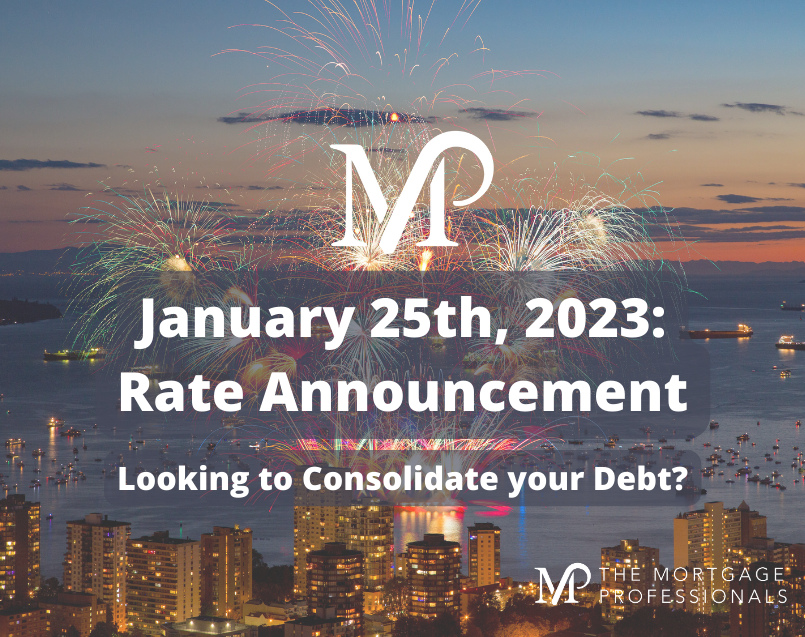|
|
|
|
|
|
|
|
|
|
Today’s Rate Announcement DetailsToday the Bank made its final rate announcement for the year by raising the overnight lending rate by 0.25%— Bringing the now Prime Rate to 6.70, from its previous standing at 6.45%. Each 25bps (0.25%) increase in the prime rate on a $100,000 mortgage balance equals +$14 per month in a mortgage payment. Meaning, since March 2022, mortgage payments have increased $238 per $100k borrowed. While the overall inflation rate is still around 5%, measurements taken over the past 3 months suggest that it may have peaked. Inflation is expected to decrease significantly this year. Lower energy prices, better global supply conditions, and the impact of higher interest rates on demand are all expected to bring the inflation rate down to around 3% in the middle of this year and back to the target rate of 2% by 2024. Russia’s ongoing conflict with Ukraine is causing uncertainty. Financial conditions are still tight, but have improved since October, and the Canadian dollar has remained stable compared to the US dollar. The bank predicts that the global economy will grow by about 3.5% in 2022, then slow down to 2% in 2023 and 2.5% in 2024. This is slightly better than the bank’s prediction in October.
|
|
 |
|
|
|
|
First, let’s take a look at where we left off in 2022We ended the last rate announcement of 2022 with an increase of 25bps (0.25%)— Bringing the Prime rate to its previous level of 4.25%. The mortgage rate environment over the past year has caused angst for many as the prime rate increased 400bps since March 2022. Inflation, trigger rates and rising mortgage payments have been on everyone’s mind as the bank continues to raise interest rates in hopes to combat persistent inflation. Here are some end-of-the-year stats to help us situate ourselves in the new year’s market:
|
|
|
|
|
|
|
Consumer debt is on the rise.According to Equifax Canada, consumer debt reached $2.36 trillion in the third quarter, a 7.3% increase from the previous year. A recent survey shows that 71% of respondents are concerned about interest rates increasing faster than they can handle, which is a 4% increase from the previous survey. While not all variable mortgages will see an immediate increase in payments with higher rates, those with fixed payments have trigger rates to consider, which is the point at which the lender may ask the holder to pay more or adjust their terms to pay off more of the principal loan. Before the recent hike, the Bank of Canada estimated that half of the mortgage holders with these types of loans had already reached their trigger rates. Credit card spending reached an all-time high by Q3 2022, rising 17.3% from 2021. The average spending on credit cards was also up, reaching $2,447, a 21.8% increase from the third quarter of 2019.
|
|
 |
|
|
If you have reached your trigger rate and are in need of a consultation for your unique situation, the best thing to do is contact us. Consulting a Mortgage Professional is the best way to ensure you have someone who is working with your best interest in mind. |

